- Home
- Christopher Nicole
Her Name Will Be Faith Page 5
Her Name Will Be Faith Read online
Page 5
Jo was fascinated. Not only by the subject itself, which she had never really considered in any depth before, but by the total knowledge and expertise which flowed from the man. He was an expert. As well as being one of the most attractive men she had ever met. But that was dangerous thinking in her present state of mind.
“So,” he was saying, “back in the days when radio was first developed, and as accurate weather forecasts became important to shipping, and sport, and of course aviation, and folks realized that long-range forecasting could even save lives, a whole series of these weather reporting stations I was talking about were set up. There were even ships at sea, whose business was to maintain a certain position and do nothing but report on the weather. So a regular series of observations could be obtained from very far away, and an idea of what was happening there fitted into an overall picture of what the weather was doing everywhere else, in what direction and how fast the systems were moving, what wind strengths could be anticipated, etcetera. But of course those are all virtually obsolete now. Since the Hitler War, radar has been developed to such an extent that we can look hundreds of miles out to sea, and in the last thirty years or so we’ve had the spread of satellite observation. From a satellite you can look across several hundred miles of weather at a glance. Take that picture, for instance…” he indicated the huge framed photograph hanging on the wall above his head.
Jo did indeed look at it. She had noticed it when she first sat down, and had intended to bring it into the conversation as soon as she could. It was an enlarged photograph of the Gulf of Mexico, taken from a great distance up, in the center of which was a pile of white, rather like a large scoop of whipped cream dropped on to the cardboard, although the cream was clearly rotating in an anti-clockwise direction, while in the center there was drilled a neat little blue hole. “That’s a hurricane,” she said. “The hole is the eye.”
“The first hurricane of 1977,” he agreed. “Named Anita. Now there you have the entire dimensions of the system on one photo. The outer clouds, those things that look like rocks, are over Brownsville, Texas. The hurricane force winds, the edge of that thick white cloud, are hitting the Mexican coast, around Yucatan. And of course the size of the system, and the speed at which it is travelling, is monitored from minute to minute.”
“Gosh,” she said. “That looks absolutely terrifying. Have you ever been in one of those?”
He grinned. “Nope. Nothing like that. Anita was a big storm. She carried sustained winds, for a little while, of 150 miles an hour, which made her a Category Four storm, and in fact, damned near a Category Five. She didn’t make it, but in terms of wind speed she was the biggest storm in the Atlantic area for twenty years.”
“Gosh,” she said again, and paused. “May I ask you a $64,000 question?”
“Sure.”
“Well, you have just convinced me how accurate all your observations and tracking systems are. That being so, how come the forecasts you hear are so often wrong?”
He held up a forefinger. “Not wrong. They are sometimes inaccurate as to timing, and sometimes the weather does quite unpredictable things. I’m afraid not the most sophisticated apparatus in the world can guarantee a system will do what it should do, by all the rules. There are certain rules on which we can rely, as I have outlined. If you have a low-pressure area in the northern hemisphere, the winds will rotate around it in an anti-clockwise direction. There is no possibility of them doing otherwise. Just as winds will always flow from high pressure to low; they will never blow up a pressure gradient. And tides rise and fall in approximately twelve-hour cycles, no matter what the weather may be doing. These are natural laws. But a weather system is its own boss. For instance, we might track a system all the way from its beginning, off, say, the West Coast of Africa, around Cape Verde, and for seven consecutive days it may travel due west at 15 knots. Now, we can say with absolute certainty that there is bad weather coming. And after seven days we might be tempted to say that in twenty-four hours from now the storm center is going to be 360 nautical miles due west of its present position. But at any moment, without warning, it may change course, increase speed, decrease speed, or stop altogether. We do know that there are rivers of air in the atmosphere, along which storm systems flow like driftwood in a river. We also know that tropical storms spawn, and can only flourish, over warm water. But we can still never be absolutely certain what they are going to do next. And incidentally, if you are going to use any of this, be sure you point up the difference between the speed at which the system may be travelling, and the wind speeds it is generating. A lot of people make the mistake of thinking that the faster a hurricane is travelling the more dangerous it is, whatever the wind speeds circulating round the eye happen to be. That is quite wrong. In fact, in most cases, the reverse is true. Hurricane winds are generated by heat, not by speed. Therefore, the slower a hurricane is travelling, the more time, for instance, it spends over warm water, the stronger the winds round the center are likely to be. Equally, the faster a system is travelling, the faster it will hit you and be on its way again.”
“Yes,” she said. “I think I have it. Gosh…” she looked at her watch. “I have taken up an awful amount of your time. Really, I could sit here and talk to you forever, but…”
“I haven’t told you about hurricanes yet,” he pointed out. “Well, maybe…”
“We can talk about them over lunch,” he told her.
Jo was taken by surprise. She hadn’t had a chance to analyze what she felt about this man, and it was necessary to feel something about him if she was going to write about him. And if she had often lunched with other interviewees, it had never been on a day quite like this, when she should have been supporting Michael at the Four Seasons… and if not, munching a sandwich at the office. But she only hesitated for a moment before accepting — she wanted to feel she could get some of her own back for that slap this morning.
He took her to a trattoria. “I can recommend the pizzas here,” Richard told her, across the red-chequered tablecloth.
“I love good pizza,” she said. “Pepperoni, please. And a salad.”
“Make that two,” he told the waiter. “And will you bring us a bottle of Frascati right away, please?”
“Si, signor.” The boy departed, and returned to uncork and pour the pale Italian wine.
“I don’t like spirits at midday unless I know I can nap it off after lunch.” Richard raised his glass. “Hope you enjoy this.”
Jo sipped, and nodded. “It’s lovely. Very light and refreshing.”
He watched her, as he had throughout the interview. She fascinated him — probably because she was the greatest possible contrast to Pam, in every way, so relaxed and friendly on the one hand, and yet so correct on the other, reserved in her speech and gestures: the idea of her ever rolling around with a beach bum was impossible. “Are you English?” he asked suddenly.
“Heavens! Do I still have an accent?” She laughed and nodded. “Yes, I am.”
“I can’t say you have too much of an accent, but it’s the way you talk, and sit, and your clothes… they look English.”
“They are.”
“And happily married, I would say.”
Jo shrugged. “Isn’t everyone?”
“No,” Richard said briefly. “Tell me about yours.”
Between mouthfuls of pizza, Jo told him a little about herself, how she and her husband had met, her career, surprised by the number of his questions, wanting to believe his apparent interest was genuine. “Now tell me what went wrong with yours?” she asked. And he knew her question was genuine; more than a mere attempt to gain copy for her article.
“I guess she wanted to live one way, and I another.”
“I’m sorry. Are you divorced?”
He nodded.
“Would that be why you left Florida?”
“I left Florida because NABS offered me twice as much as I was getting there.” Then he gave a crooked grin. “Don’t you belie
ve it: I was running like hell.”
They gazed at each other for several moments, then she swallowed her last mouthful. “That was lovely.”
“Dessert? Coffee? They do a great cappuccino.”
“I really should be getting back.”
“But we haven’t talked about hurricanes, yet.”
“Heavens! We haven’t, have we? Well, perhaps, if you do recommend the cappuccino…”
Richard signaled the waiter.
“So,” she said. “Can you tell me, as simply as possible, what a hurricane actually is?”
“Well, as simply as possible, it is a depression which has gotten out of hand. Depressions are caused by warm air rising, which warm air will always do: think of the steam from your kettle. Nature, as you know, abhors a vacuum, so when warm air rises, cold air rushes in to replace it. Even well up in the north it can do this at quite a speed, but being cold air the whole system tends to collapse fairly quickly. In the sub-tropics, when the water temperature heats up, the air starts to rise, and is replaced by only slightly cooler air. Thus this new air isn’t cold enough to quash the system; it merely heats up and rises itself. So we have a continual spiral of rising air, which, if the other conditions are right, just gets faster and faster, like a top gaining speed instead of losing it. You could think of a hurricane as a gigantic tornado or waterspout, only they can be hundreds of miles across. And of course they are generating winds of Force Twelve and up.”
“Why do you say Force Twelve? What does that mean?”
He grinned at her as he stirred coffee. “I think you know that one.”
“Maybe I do, but tell me anyway. So I can quote you.”
“Well, it’s just a reference system invented by a British admiral named Beaufort about 150 years ago. So it’s called the Beaufort Scale. It divides up wind speeds into readily recognizable categories. For instance, zero on the scale is flat calm. Force Three is a light breeze, say 12 knots: that’s when you would get your first whitecaps at sea, and your first tree moving on land. Small trees, anyway. Force Five is a pretty good breeze, and when you have Force Six, which is around 25 knots, you have spray flying and big trees whipping to and fro. It’s the sort of wind you’d have difficulty walking against. After that you get into storm territory. Force Eight is a gale, around 35 knots. That can be pretty serious at sea, at least to small craft. Yachts have to reef. Then Force Ten is a storm, 50 knots. Now that really is something. You have big waves, twenty or thirty feet from trough to crest. Even good-sized ships can get into trouble in that type of situation. And on land you have some trees coming down, and chimney pots and that sort of thing.”
“And Force Twelve is a hurricane.” Jo gazed at him over the rim of her coffee cup. “How strong is that?”
“64 knots, or 75 miles per hour.”
“And that’s dangerous to everybody.”
“It’s dangerous. But 75 miles an hour is only what we call a Category One storm, and its damage effect, in hurricane terms, is minimal.”
“That’s right,” she said. “Back at the studio you mentioned that Anita was Category Four. How strong is that?”
“That is strong,” he said. “You see, although all winds of more than 75 miles per hour are hurricanes, it is possible to have winds twice that speed. So to differentiate between what we might call an ordinary hurricane and a real killer storm, the Weather Bureau divides them up into categories, depending on wind strength. Category One contains winds of 74 to 95 miles an hour. Okay, that’ll knock down a few trees and signs. Category Two, up to 110 miles an hour, knocks over mobile homes and can get under poorly constructed roofs. Category Three has winds of up to 130 miles an hour. Now you’d have big trees coming down and some roofs coming right off. But Category Four can reach 150 miles per hour, and that’s more than double the speed of an ‘ordinary’ hurricane. It’s real nasty. You really want to be battened down tight in those circumstances, or your roof will almost certainly go.”
“Sounds horrific. A 150-mile-an-hour wind. Hard to imagine.”
“It’s not the ultimate.”
“You mean there are stronger winds?”
“There have been. Not very often, thank God. In fact only about four this century, at least in the Western Atlantic.”
“And that’s Category Five, right?”
“Right. When you get that, whole buildings, and I mean properly constructed buildings, can get blown down.”
“But what would cause a Category Five to happen?”
“Well…” he signaled for fresh cappuccinos. “Nobody actually knows. Nobody actually knows enough about why hurricanes spawn at all. Sure we know they won’t form unless the water temperature is high enough. But that’s not to say they will appear the moment the temperature reaches 26 Centigrade. Just as we don’t know why they sometimes fizzle and why they sometimes keep on building. The jet streams have a lot to do with it. Those are the upper atmosphere winds, which are very strong but have nothing to do with barometric pressure or heat; they’re caused by the earth’s rotation. If they happen to be blowing over where a hurricane is forming, they can scatter the rising air before it becomes a system. Again, when a hurricane hits land it tends to dissipate, because land temperatures aren’t as stable as those of the sea.”
“Is that why, after they have tracked west across the ocean and reached America, they generally turn back?”
“Not really. That is part of the earth’s rotation also.”
Jo regarded her notes. She had enough for a small book. “That’s all Just great,” she said. “But tell me one thing more, Richard: how dangerous are hurricanes? I mean, compared with earthquakes or volcanoes or things like that? I know they can push up tidal waves…”
“We call them storm surges,” he murmured.
“…in places like Bangladesh, and drown a lot of people, but those are exceptional circumstances, surely, with vast low-lying areas exposed to the sea? The porter in my apartment says his father told him about the ’26 hurricane down in Florida, which killed a lot of people.”
“Over four hundred,” Richard said. “Florida was much more sparsely populated then than now. Jo, in terms of energy release, a hurricane is the most destructive of all natural phenomena, and that includes volcanoes and earthquakes. Just for example, even a small hurricane generates as much energy as several atomic explosions added together. There is no radiation, of course, and no searing heat. But it is still the mightiest force known to nature.”
“I hadn’t realized that.”
“Very few people do.”
“So it’s the wind which causes the most damage.”
“Oh, no. It’s the water. Figure this: a Category One storm will push up a storm surge of maybe five feet above normal water level. Now, remember, it is not a wave, nor is it a rise of tide. It is a surge, which may arrive several hours before the wind and start flooding low-lying coastal areas, and then continue for as long as the wind is blowing. And this surge gets bigger with every increase of wind. A Category Three storm could have a storm surge of as much as twelve feet above normal.”
“And Category Five?”
“The highest storm surge we have recorded is about 20 feet above normal. But it could go higher than that. And this, of course, is on top of the tidal range, which could be a big one if it was a spring tide, so that on top of the surge there will be waves of as much as 50 feet high, breaking.”
“My God! Thank heaven we don’t have things like that in New York.”
“You could. Don’t forget Gloria.”
“Back in 1985,” she recalled. “Oh, yes. We were all panicking like mad. But she didn’t turn out to be half as bad as people expected, or as you weather forecasters said she would be.”
“That was because the Big Apple is one hell of a lucky city,” Richard told her. “Consider these points. Gloria was a Category Three storm, big enough in all conscience, but a long way short of the biggest possible. Then she passed east of New York, the center, that is. That’
s very important, because of that anti-clockwise movement I was telling you about. In the northern hemisphere a hurricane pushes out its strongest winds and biggest seas to the right of it as it moves, and thus in a west moving storm the extreme conditions are always found in the northern half — what sailors call the dangerous semi-circle. The front quarter of this semi-circle is the most dangerous of all. With Gloria, as she was moving north by the time she came up here, that quadrant was on the northeast, that is, always out at sea. If she had come ashore, if, say, the center had crossed the coast over Atlantic City, it would have been a different matter: you’d have had the strongest winds blowing up Broadway. And then again, when Gloria did come ashore, on Long Island, she did so at low water. If she’d gotten there at the top of a high tide there could have been incalculable damage, and even loss of life. So you see, it could happen.”
“But will it ever?”
He grinned. “You’ll have to ask God that. But it most certainly could, given the right atmospheric conditions, or I guess I should say, the wrong conditions.”
“Is there anything that could be done to avert it, or mitigate the damage, if it were to happen?”
“There’s not a thing anyone can do to avert a hurricane. The only practical step which can be taken to mitigate the worst effects, provided warning is received in time, would be to evacuate the whole threatened area.”
Jo stared at him in amazement. “You mean, if a major hurricane were likely to hit New York, you’d evacuate the city?”
He shrugged. “If a really major storm were taking a bead on us, I’d certainly recommend it.” Another grin. “And then shoot myself when it veered off.”

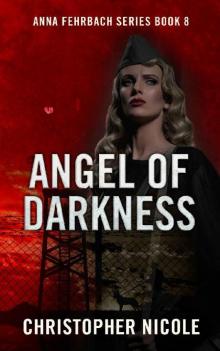 Angel of Darkness
Angel of Darkness The Seeds of Power
The Seeds of Power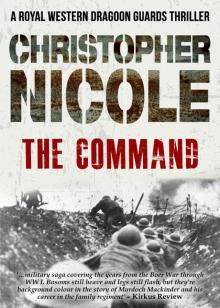 The Command
The Command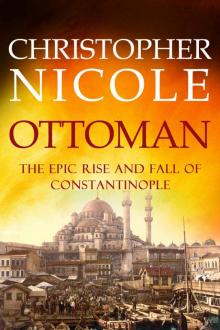 Ottoman
Ottoman The Game of Treachery
The Game of Treachery The Brightest Day
The Brightest Day Old Glory
Old Glory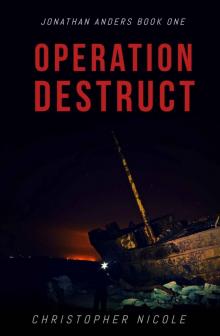 Operation Destruct
Operation Destruct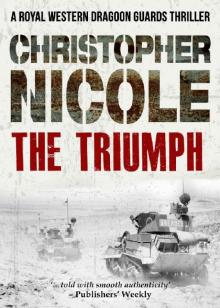 The Triumph
The Triumph Sword of Empire
Sword of Empire Murder's Art
Murder's Art To All Eternity
To All Eternity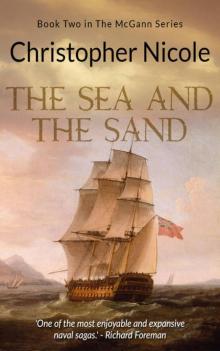 The Sea and the Sand
The Sea and the Sand The Passion and the Glory
The Passion and the Glory Angel of Destruction
Angel of Destruction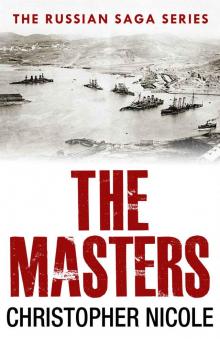 The Masters
The Masters Resistance
Resistance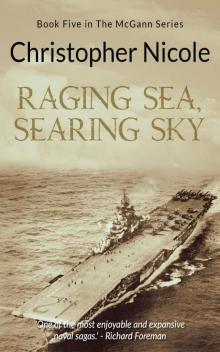 Raging Sea, Searing Sky
Raging Sea, Searing Sky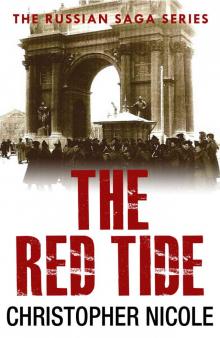 The Red Tide
The Red Tide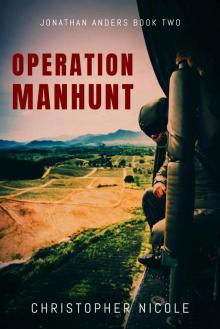 Operation Manhunt
Operation Manhunt The Scarlet Generation
The Scarlet Generation The Quest
The Quest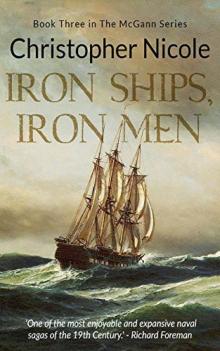 Iron Ships, Iron Men
Iron Ships, Iron Men The Regiment
The Regiment Legacy of Hate
Legacy of Hate Be Not Afraid
Be Not Afraid Partisan
Partisan Mistress of Darkness
Mistress of Darkness Angel in Red
Angel in Red HF - 01 - Caribee
HF - 01 - Caribee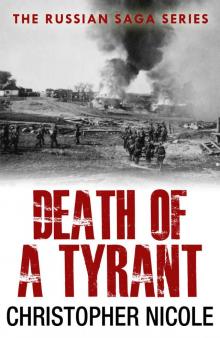 Death of a Tyrant
Death of a Tyrant Black Dawn
Black Dawn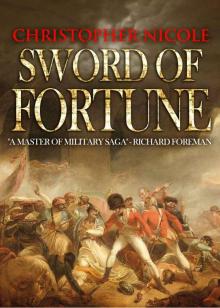 Sword of Fortune
Sword of Fortune Angel in Jeopardy: The thrilling sequel to Angel of Vengeance (Anna Fehrbach Book 4)
Angel in Jeopardy: The thrilling sequel to Angel of Vengeance (Anna Fehrbach Book 4) The Devil's Own
The Devil's Own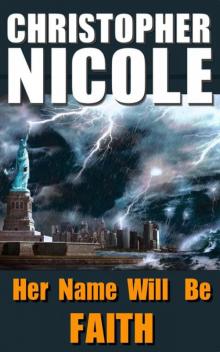 Her Name Will Be Faith
Her Name Will Be Faith Angel in Red: The thrilling sequel to Angel From Hell (Anna Fehrbach Book 2)
Angel in Red: The thrilling sequel to Angel From Hell (Anna Fehrbach Book 2) Angel in Jeopardy_The thrilling sequel to Angel of Vengeance
Angel in Jeopardy_The thrilling sequel to Angel of Vengeance Wind of Destiny
Wind of Destiny Bloody Sunrise
Bloody Sunrise HF - 03 - Mistress of Darkness
HF - 03 - Mistress of Darkness HF - 03 - The Devil's Own
HF - 03 - The Devil's Own The Red Gods
The Red Gods Angel of Vengeance: The thrilling sequel to Angel in Red (Anna Fehrbach)
Angel of Vengeance: The thrilling sequel to Angel in Red (Anna Fehrbach) Caribee
Caribee Angel of Vengeance_The thrilling sequel to Angel in Red
Angel of Vengeance_The thrilling sequel to Angel in Red Sunset
Sunset Angel of Doom (Anna Fehrback Book 5)
Angel of Doom (Anna Fehrback Book 5) Haggard
Haggard Angel in Red_The thrilling sequel to Angel From Hell
Angel in Red_The thrilling sequel to Angel From Hell HF - 04 - Black Dawn
HF - 04 - Black Dawn